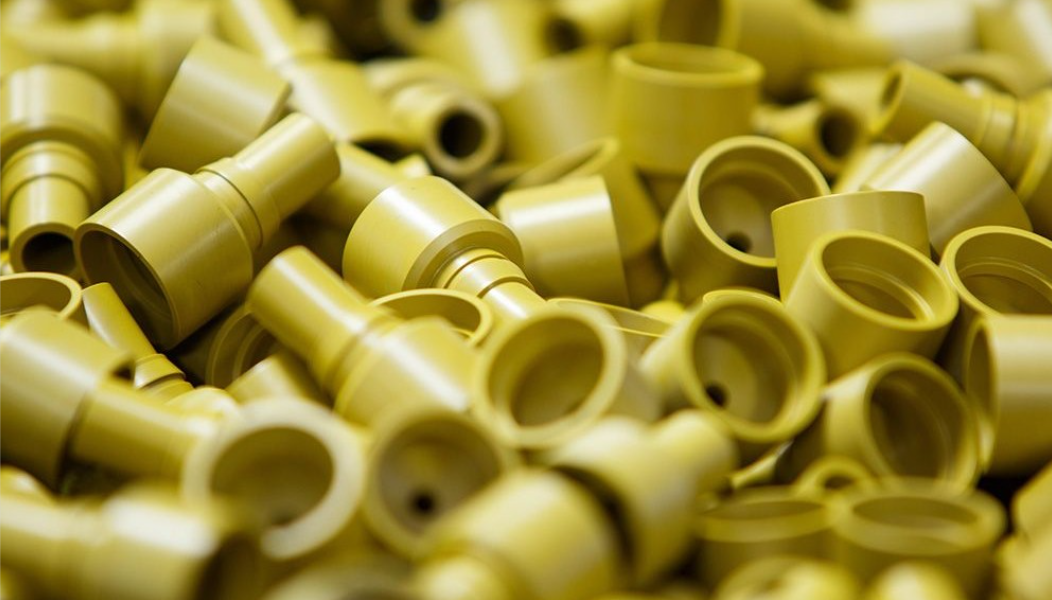PMMA is poly(methyl methacrylate), also known as plexiglass, sub-force, was invented by German chemist o. Rohm in 1902. Because PMMA has a very poor surface hardness, impact resistance, and molding fluidity, and other shortcomings, PMMA modified materials have emerged. For example, methyl methacrylate copolymerization with styrene and butadiene, PMMA-PC, etc. Plexiglass 372 is the copolymerization of methyl methacrylate and styrene, that is, adding a small amount of nitrile butadiene rubber (about 50%) in PMMA can be made into 373 plexiglass.
PMMA molding methods include casting, injection molding, mechanical processing, thermoforming, etc., especially injection molding, which can be mass-produced. Here we will introduce the PPMMA plastic injection molding process. Firstly, to understand the characteristics of the material, it has certain water absorbability, the bibulous rate of 0.3 to 0.4%, the existence of water makes the melt with bubbles, gas lines, transparency reduced, so be dry processing, usually 80-90 ℃ drying temperature and keep more than 3 hours.PMMA for amorphous polymers, melting temperature greater than 160 ℃, the decomposition temperature of 270 ℃. Recycled materials can be used in some cases 100%, the actual amount depends on the quality requirements, usually up to 30 %. The recycled material must be free from contamination that would otherwise affect the transparency and quality of the finished product. The flow generation of PMMA is worse than PS and ABS materials, and the melt viscosity is more sensitive to the change of temperature. In the molding process, the melt viscosity is mainly changed by the injection temperature.
PMMA has no special requirements for injection molding machines. Deeper spiral grooves and larger nozzle holes are required because of the high melt viscosity. If the strength of the product has higher requirements, the screw with a larger length-diameter ratio to do the low-temperature plasticizing treatment. In addition, PMMA must be dry hopper storage because it has a high rate of water absorption. Mold temperature can be set to Ken 60 ℃, 80 ℃, the diameter of the mainstream way should cooperate with internal taper, the best Angle is 5 to 7. If 4mm or more of the product is to be injected, the Angle shall be set to 7, the diameter of the main runner shall be 8 to 10mm, and the overall length of the gate shall not exceed 50mm.
For products with wall thickness less than 4mm, the diameter of the runner shall be 6-8mm; For products with a wall thickness greater than 4mm, the diameter of the runner shall be 8-12mm; The depth of the opposite side gate, fan gate and TAB gate should be 0.7 to 0.9t (t is the wall thickness of the product), and the diameter of the needle gate should be 0.8 to 2mm. Low viscosity should choose a smaller size. The melt temperature of PMMA can be measured by the air injection method, generally at 210 – 270 C, depending on the supplier’s demand. Rapid injection can be used but high internal stress should be avoided. It is suggested that the multi-stage injection method be used, such as slow-fast-slow, and slow-speed should be used in injection molding of thick-walled workpieces. If the temperature is 260 C, the retention time should not exceed 10 minutes at most. If the temperature is 270 C, the retention time should not exceed 8 minutes.
PMMA is characterized as lightweight, low price, easy to form, and soluble in organic solvents such as benzene methyl ether and other media. It also has good dielectric properties, can be used as a medium of the airport effect tube, it is widely used in instrument parts, car lights, optical lenses, transparent pipes.





